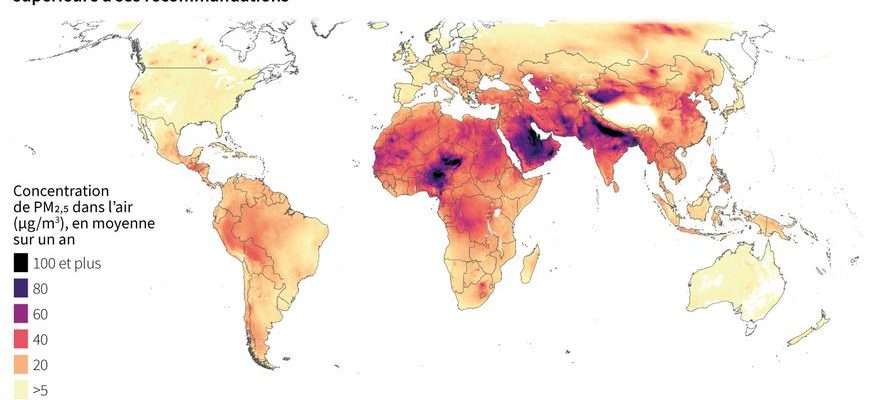“Air pollution worse than alcohol and tobacco”; “Health: air pollution deadlier than smoking and alcohol”; “Fine particles even more dangerous than tobacco and alcohol!”… It was difficult, these last days, to escape these headlines, taken from a report published by the Institute of energy policy of the university of Chicago (EPIC) on the quality of the air in the world, and repeated in loop on Internet. However, if the fine particles emitted by motor vehicles, industry and fires are undeniably toxic for our bodies, it is difficult to conclude from this work that these pollutants would be more harmful than alcohol and cigarettes – in any case, not in France, nor in most of the richest countries.
What exactly does this study say? Globally, the impact of fine particles on overall life expectancy is “comparable to the effect of tobacco, three times that of alcohol, five times that of car accidents, and seven times that of higher than that of AIDS”, note the authors of the report. But this burden weighs mainly on Asia and Africa: these two continents alone concentrate more than 90% of the years of life lost due to atmospheric pollution. Against just over 4% in the United States and Europe, where the situation has improved a lot in recent decades.
As the authors of the report point out, the European directive for air quality has made it possible to reduce this pollution by almost a quarter since 1998. On our continent, the most exposed populations are also largely found in the former eastern countries, as well as in the industrial regions of northern Italy, around Milan.
Fine particle pollution
© / afp.com/Valentin RAKOVSKY, Sabrina BLANCHARD
In France, air pollution causes 40,000 deaths a year
In comparison with these regions, the situation in the rest of Europe, and in particular in France, appears to be much better. In our country, the rate of fine particles reaches an average of 9.2 μg/m3 of air according to data gathered by American researchers. This is a level lower than the new standards that the European Commission would like to set for 2030, of 10 μg/m3. Reaching the threshold recommended by the World Health Organization, of 5 μg/m3, would make it possible to gain 0.4 additional years of life expectancy on average per person – compared to, for example, 6.8 additional years in Bangladesh, or 2 .5 years in China.
According to the latest data from Public Health France, air pollution is responsible for 40,000 deaths each year in our country. It’s still too much – but much less than cigarettes: in comparison, tobacco kills 75,000 people every year in France. And this is even less than alcohol, the cause of 49,000 direct victims, not counting indirect damage, road accidents or violence, in which alcoholic beverages are very often involved.
This does not mean, of course, that we should not continue our efforts in terms of air quality. Firstly because these data relate to the whole of France, and for the evolution of the quantities of pollutants present in the air, are only averages. As shown by the work of American researchers, the inhabitants of the Paris region, northern France and the metropolis of Lyon remain more exposed to fine particles than those in the rest of the country. A pollution whose consequences go well beyond premature death, since various research works in recent years have pointed to possible links between air pollution, dementia and Alzheimer’s disease, or even with the appearance of cases of autism when mothers are significantly exposed during pregnancy.
